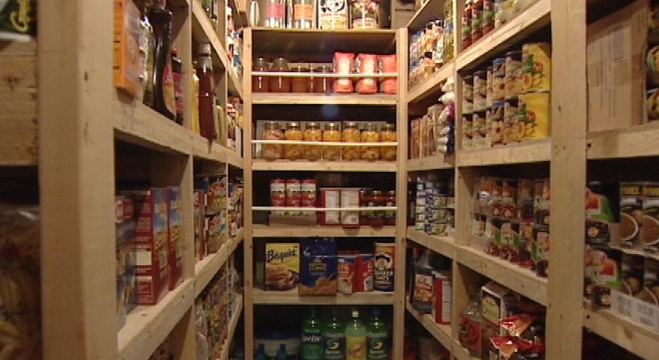Limited space? You can still prep well for a SHTF scenario
06/17/2016 / By usafeaturesmedia

(Bugout.news) For many people, the challenge of assembling a stockpile for surviving a disaster is a matter not simply of expense but also of finding or creating enough storage space in which to do so.
Those who live in small apartments, “tiny houses,” RVs or other living spaces with limited storage areas may find it difficult to stockpile enough supplies to last more than a few days.
There are, however, some strategies that can help you make the best use of the available space, while choosing the right items to store for obtaining maximum survival time when the SHTF.
No matter how large a space you have at your disposal, there needs to be an overall balance between essentials such as water and food (both of which take up a lot of space) and other items necessary for survival and comfort.
There is no one formula, and every individual or family must assemble their own survival stockpile based not only on available space but also on other factors such as location, climate and available resources (such as a reliable fresh water supply).
In other words, depending on your particular circumstances, one or another essential may be more critical to survival. If you live in a desert area or dry climate, obviously water would be a priority. If you live in a large city in a cold climate, your priorities will be slightly different.
With this in mind, you’ll need to consider the space you have and create a formula that fits.
Find ways to maximize and expand your available storage space. Even in a small living area, there are usually several ways to make better use of the limited space you have.
Sponsored solution from the Health Ranger Store: The Big Berkey water filter removes almost 100% of all contaminants using only the power of gravity (no electricity needed, works completely off-grid). Widely consider the ultimate "survival" water filter, the Big Berkey is made of stainless steel and has been laboratory verified for high-efficiency removal of heavy metals by CWC Labs, with tests personally conducted by Mike Adams. Explore more here.
Adding or redesigning shelving is one tactic. Often, closets and cabinets have room for additional shelving that can be added to maximize storage efficiency.
Buying or building additional storage closets or cabinets may also be an option — it’s commonplace to find such items being thrown away or sold very cheaply.
Stackable plastic bins are also cheap and efficient solutions for storing food and other items. Throw a tablecloth over a stack of bins and you have an extra end table or a place to put some houseplants that isn’t an eyesore, and no one will be able to see what you are storing in the bins.
Even seemingly small spaces you might have overlooked can be utilized for storage. For instance if, there’s a gap wide enough to fit a can in between your fridge and kitchen cabinet, you could use that space it to store several dozen cans of food.
Attics, overhead crawlspaces, under beds — the idea is to use every square foot of available space. Raising a bed by just one or two feet adds a lot of storage space underneath. Just make sure to not store perishables in areas that aren’t climate-controlled.
If you have a yard, you can also bury non-perishable items in watertight containers wrapped in plastic sheeting or canvas.
If you make good use of your space, you can store enough supplies to get you through even a prolonged period, and if you’re creative in disguising your stockpile, the casual visitor will never even know that you are a prepper.
The main thing is to at least begin to stockpile some essentials that can get you through a minor emergency, such as a several-day power outage or a weather event that keeps you from easily obtaining food and water.
As you begin to expand your stockpile over time, you’ll be able to figure out how to best utilize all the space you have — it just takes getting in the right frame of mind. Don’t use your perceived limited space as an excuse not to begin preparing for the unforeseen.
Reporting by Daniel Barker, NaturalNews.com.
Sources:
http://www.thesurvivalistblog.net
http://www.thesurvivalistblog.net
http://www.survivopedia.com
More:
- Check Out These 10 DIY Prepping Skills That Are Easy, Fun And Effective
- See Inside An Actual Bugout Bag And Learn What You Will, And Will Not, Need To Take With You
- 15 Uses For Dental Floss That Will Dramatically Expand Your Survival Abilities
Bugout.news is part of the USA Features Media network. Check out our daily headlines here.
Tagged Under: limited space, prepping, survival





















